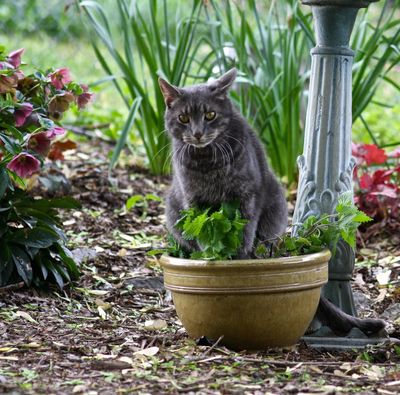Why are Cats Attracted to Catnip?
Catnip (Nepeta cataria) contains nepetalactone, a chemical that attracts many cats, including tigers and other wild felines. Cats typically react by rolling or chewing on the leaves, or by rubbing against the plant. They may even get a little crazy if you have traces of catnip on your shoes. Some cats become super playful while others become anxious, aggressive, or sleepy. They may purr or drool. A reaction to catnip lasts only five to 15 minutes. Catnip is “purr-fectly” safe and non-addictive, although ingesting a large amount could potentially cause a mild tummy upset. If your cat shows no interest in catnip, this is also normal. Sensitivity to catnip is genetic and about one-third to one-half of cats are totally unaffected by the plant.
Protecting Your Catnip from Cats
Catnip isn’t a particularly pretty herb and it tends to be somewhat aggressive. However, many gardeners grow catnip for its medicinal qualities, making safeguarding catnip plants necessary. Tea made from catnip leaves is a mild sedative and may relieve headaches, nausea, and insomnia. The leaves are sometimes applied directly to the skin as a treatment for arthritis. If the neighborhood felines are visiting your catnip plant more than you like, you may need to protect the plant from too much kitty attention. About the only way of protecting your catnip from cats is to surround the plant with some type of enclosure. You can use wire fencing, as long as paws can’t easily fit through the holes. Some people like to put potted catnip in a birdcage. Catnip also does well in hanging baskets, as long as the basket is safely out of reach.
